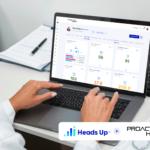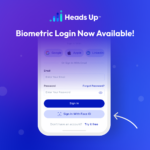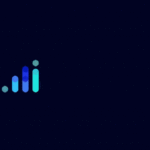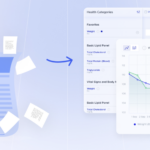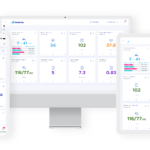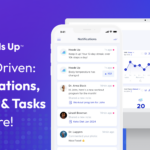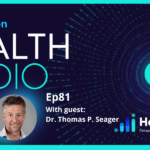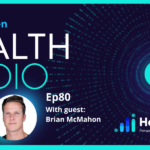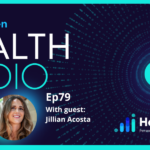Here’s a life hack: track your nutrition and see results. Sounds easy, right?
Well, anyone who’s tried nutrition tracking knows that it’s a hard habit to incorporate into a busy schedule. Back in the day if you wanted to do this you’d have to write it down in a journal; a “food diary.”
Luckily, with the rapid advancement of digital health, there are loads of apps for health available. One of the most popular — and our favorite — is MyFitnessPal. It’s free to download, easy to use and loaded with cool features to help guide you as you navigate the murky waters of improving nutrition.
If you’re already tracking your nutrition, or you’re about to start, register for the beta launch of Heads Up Health. If you stick with it, it’s totally worth it. There are many benefits, and you don’t need it to be the New Year to make a resolution to start tracking your nutrition. Here are five ways nutrition tracking can improve your life:
1. You can lose more weight than if you didn’t track — a 2008 Kaiser Permanente study found that people who tracked what they ate lost twice as much weight. This same study found that the more frequently the participants recorded their nutrition, the more weight they lost in the end. Basically, if you’re trying to lose weight, not tracking your nutrition is not an option.
That’s why Heads Up Health is designed to integrate with MyFitnessPal. Once you sync MyFitnessPal with your Heads Up Health account, you can graph your weight and calorie trends. More likely than not, you’ll start to see some correlations between your weight and caloric intake — and you’ll also see that one bad nutrition day will not make you gain tons of weight.
2. You can figure out if it’s your diet that’s making you sluggish and cranky — If you frequently feel sluggish or even anxious, start tracking when you feel that way and what you ate around that time. Feeling bloating after eating pasta, bread or other refined carbohydrates? It might be a gluten intolerance. Get the stomach gurgles or allergy symptoms only in the morning? It could be the dairy in the milk in your cereal or creamer in your coffee. In Heads Up Health, you can easily add these feelings as Journal Entries. It’s a quick way to time/date stamp any potential reactions to food, and you can pull them up later when you talk to your physician or a dietitian.
3. You can see if you are, or aren’t, eating a balanced diet — How can you be really sure that you’re eating a balanced diet it you’re not tracking it? You might feel like you have a good grasp on it, but it’s possible that you’re actually getting too much protein (which has been estimated to actually be a problem in the U.S., for vegetarians and non-vegetarians alike), too many calories from carbohydrates or not enough healthy fat. You can also start to experiment with different strategies for changing your eating habits. For example, check out this great post from the Founder and CEO of Heads Up Health, David Korsunsky. He packed on 6.3 pounds of lean muscle mass and lost 3.8 pounds of fat while increasing healthy fat consumption and decreasing exercise on the Bulletproof Diet!
4. You can lower your cholesterol and/or glucose — Let’s say you just went to your annual physical exam and your physician ordered some blood work. And, sure enough, your cholesterol at 225 mg/dL (higher than it should be) and your glucose is around 117 mg/dL — also a smidge too high. The good news is that you can reverse those trends through lifestyle changes, including diet and exercise. The sooner you start the changes, the sooner you’ll lower your cholesterol and/or glucose!
5. It keeps you honest to yourself — Look, no one wants to admit that that one beer or glass of wine is going to put them over their calorie limit for the day. But just because you don’t track it doesn’t mean it didn’t happen. Tracking your nutrition accurately provides you with a detailed story of reaching your healthy goals. It shows you where you’re doing well (drinking enough water!) and where you’re making mistakes. Once you’re aware of where you’re making mistakes, you can focus your time and energy on fixing them.
Heads Up Health Recommendations
Apps:
- MyFitnessPal — This app is free to download and tracks your total caloric intake, plus your nutrients: protein, carbohydrates, fiber, sugars, fat, sodium, potassium, iron, etc. All you have to do is enter your food (or scan the barcode if it’s a packaged food item) and MyFitnessPal does the work for you by breaking down what you actually ate. If you sync this up to your Heads Up Health account, you can see how your total calories are impacting your weight, blood sugar, cholesterol levels and other important health indicators.
Tracking your nutrition has many more benefits, and with free apps for health out there, you might as well begin tracking, even if it’s just for a week or two. Over time, you’ll learn how much you’re eating and maybe see some areas where you could improve.
If you’re interested in tracking your nutrition, and seeing how it affects your other healthcare analytics — weight, blood pressure, cholesterol, glucose — sign up for the beta version of Health Up Health. Or, if you’re just interested in staying up-to-date with the latest healthcare, fitness and wellness trends, follow us on Twitter or Facebook.


